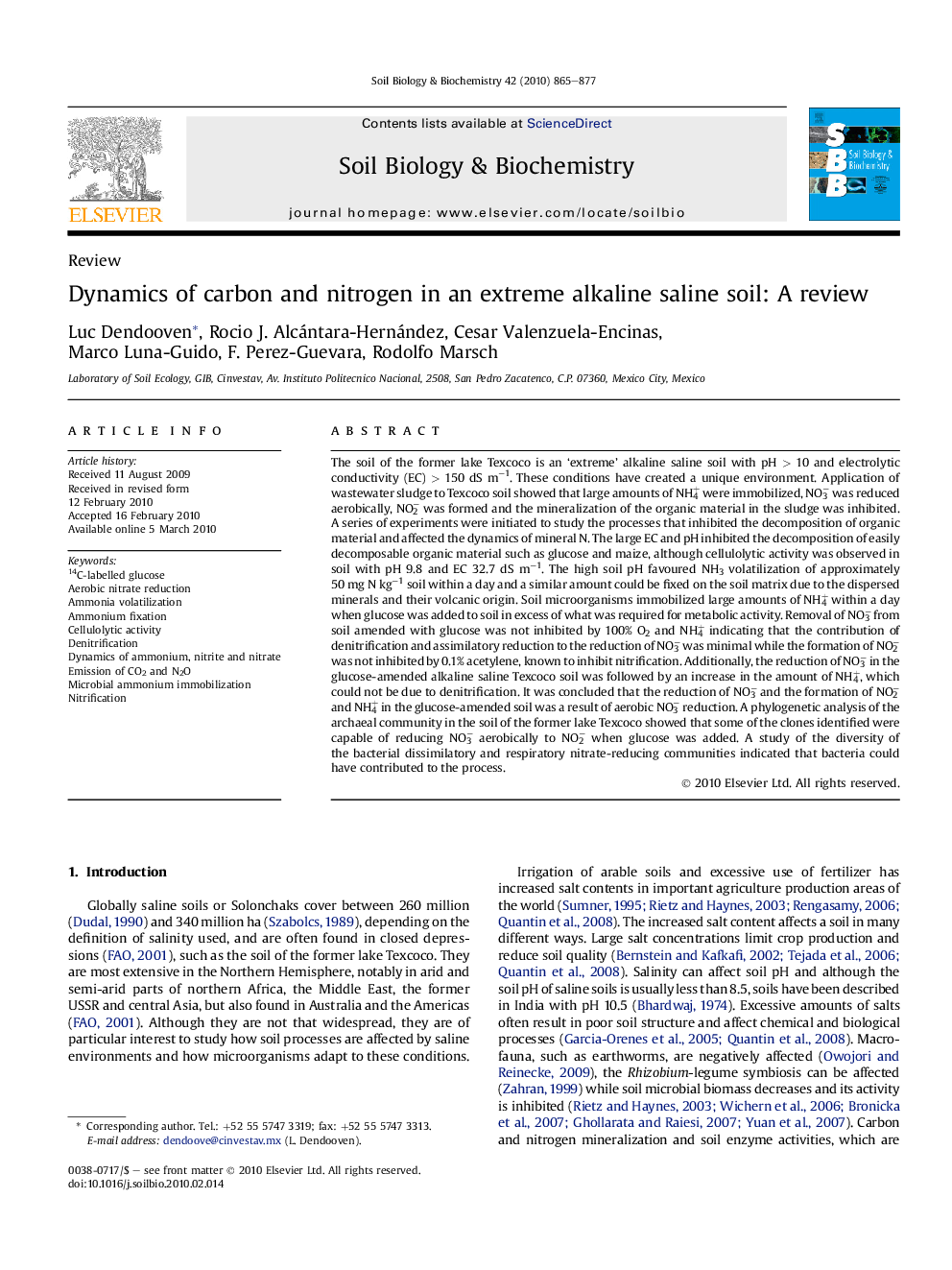| کد مقاله | کد نشریه | سال انتشار | مقاله انگلیسی | نسخه تمام متن |
|---|---|---|---|---|
| 2025680 | 1070006 | 2010 | 13 صفحه PDF | دانلود رایگان |

The soil of the former lake Texcoco is an ‘extreme’ alkaline saline soil with pH > 10 and electrolytic conductivity (EC) > 150 dS m−1. These conditions have created a unique environment. Application of wastewater sludge to Texcoco soil showed that large amounts of NH4+ were immobilized, NO3− was reduced aerobically, NO2− was formed and the mineralization of the organic material in the sludge was inhibited. A series of experiments were initiated to study the processes that inhibited the decomposition of organic material and affected the dynamics of mineral N. The large EC and pH inhibited the decomposition of easily decomposable organic material such as glucose and maize, although cellulolytic activity was observed in soil with pH 9.8 and EC 32.7 dS m−1. The high soil pH favoured NH3 volatilization of approximately 50 mg N kg−1 soil within a day and a similar amount could be fixed on the soil matrix due to the dispersed minerals and their volcanic origin. Soil microorganisms immobilized large amounts of NH4+ within a day when glucose was added to soil in excess of what was required for metabolic activity. Removal of NO3− from soil amended with glucose was not inhibited by 100% O2 and NH4+ indicating that the contribution of denitrification and assimilatory reduction to the reduction of NO3− was minimal while the formation of NO2− was not inhibited by 0.1% acetylene, known to inhibit nitrification. Additionally, the reduction of NO3− in the glucose-amended alkaline saline Texcoco soil was followed by an increase in the amount of NH4+, which could not be due to denitrification. It was concluded that the reduction of NO3− and the formation of NO2− and NH4+ in the glucose-amended soil was a result of aerobic NO3− reduction. A phylogenetic analysis of the archaeal community in the soil of the former lake Texcoco showed that some of the clones identified were capable of reducing NO3− aerobically to NO2− when glucose was added. A study of the diversity of the bacterial dissimilatory and respiratory nitrate-reducing communities indicated that bacteria could have contributed to the process.
Journal: Soil Biology and Biochemistry - Volume 42, Issue 6, June 2010, Pages 865–877